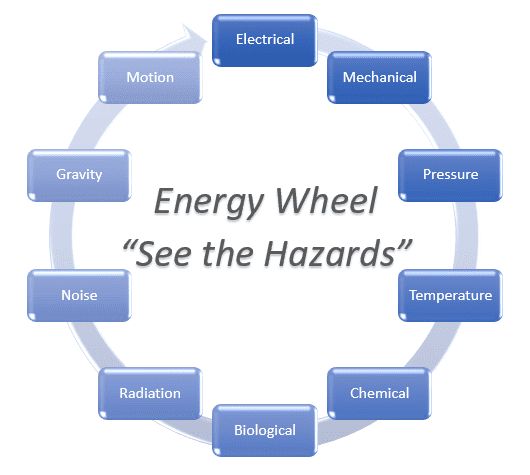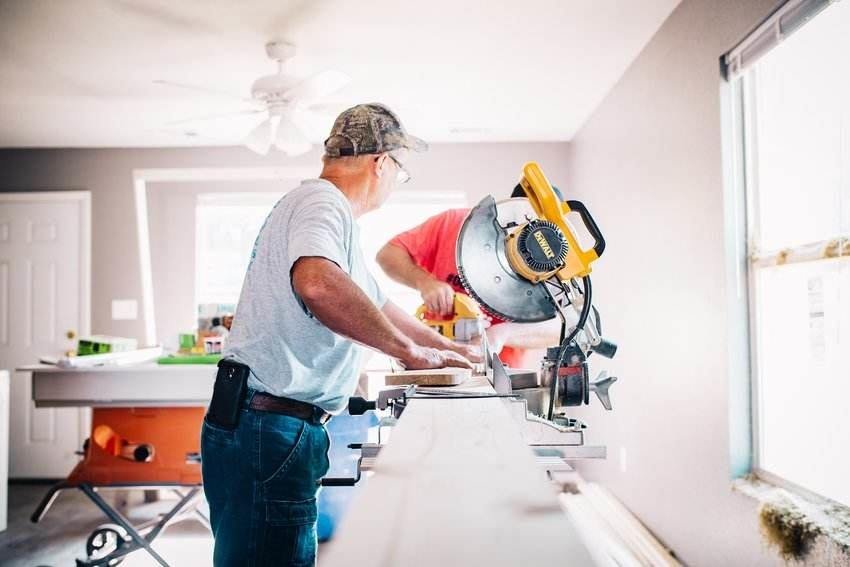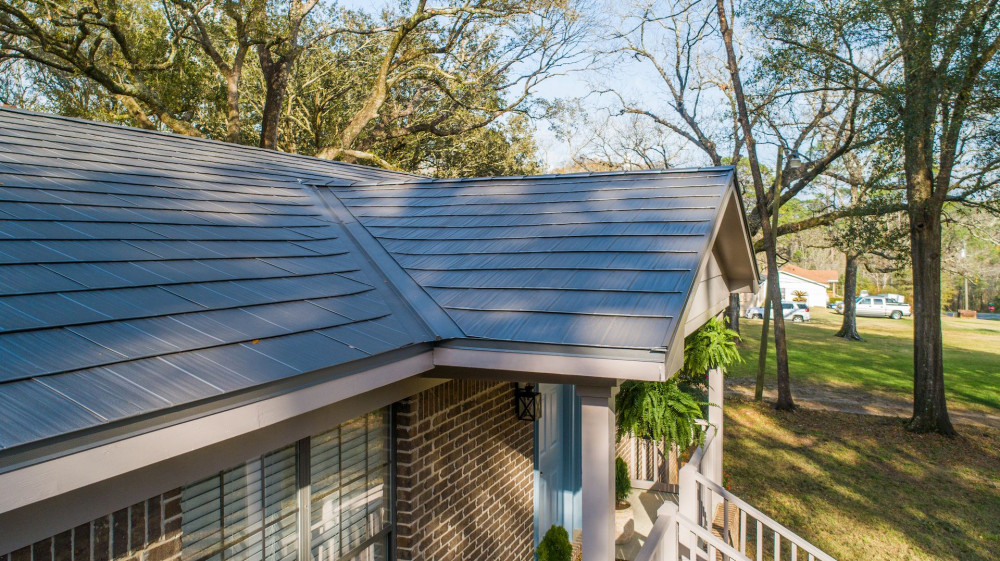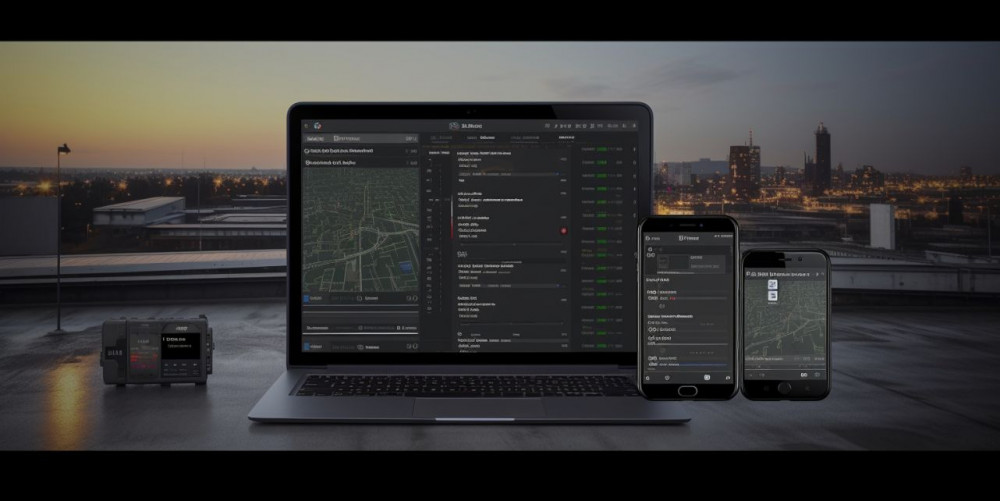District heating (also known as heat networks or teleheating) is a system for distributing heat generated in a centralized location for residential and commercial heating requirements such as space heating and water heating. The heat is often obtained from a cogeneration plant burning fossil fuels but increasingly also biomass, although heat-only boiler stations, geothermal heating, heat pumps and central solar heating are also used, as well as nuclear power. District heating plants can provide higher efficiencies and better pollution control than localised boilers. According to some research, district heating with combined heat and power (CHPDH) is the cheapest method of cutting carbon emissions, and has one of the lowest carbon footprints of all fossil generation plants. CHPDH is being developed in Denmark as a store for renewable energy, particularly wind electric, that exceeds instantaneous grid demand via the use of heat pumps and thermal stores.
Heat sources in use for various district heating systems include: geothermal heat; solar heat; industrial heat pumps which extract heat from seawater, river or lake water, sewage, or waste heat from industrial processes; power plants designed for combined heat and power (CHP, also called co-generation), including both combustion and nuclear power plants; and simple combustion of a fossil fuel or biomass.
United States
Use of solar heat for district heating has been increasing in Denmark and Germany in recent years. The systems usually include interseasonal thermal energy storage for a consistent heat output day to day and between summer and winter. Good examples are in Braedstrup and Marstal, Denmark. These systems have been incrementally expanded to supply 10% and 40% of their villages' annual space heating needs. The solar-thermal panels are ground-mounted in fields. The heat storage is, respectively, in a borehole cluster and a pit storage. In Alberta, Canada the Drake Landing Solar Community has achieved a world record 97% annual solar fraction for heating needs, using solar-thermal panels on the garage roofs and thermal storage in a borehole cluster.
Perhaps best illustrated by the Drammen Fjernvarme District Heating project in Norway which produces 14 MW from water at just 8 °C, industrial heat pumps are credible heat sources for district heating networks.
With European countries such as Germany and Denmark moving to very high levels (80 & 100% by 2050) of renewable energy for all energy uses there will be increasing periods of excess production of renewable electrical energy. Storage of this energy as potential electrical energy e.g. pumped hydro, etc. is very costly, round trip efficiency is reduced and should be minimised. But storage as heat in District Heating for use in buildings where there is demand is significantly less costly. Whilst the quality of the electrical energy is degraded, high voltage grid MW sized heat pumps would maximise efficiency whilst not wasting excess renewable electricity.
The core element of many district heating systems is a heat-only boiler station. Additionally a cogeneration plant (also called combined heat and power, CHP) is often added in parallel with the boilers. Both have in common that they are typically based on combustion of primary energy carriers. The difference between the two systems is that, in a cogeneration plant, heat and electricity are generated simultaneously, whereas in heat-only boiler stations – as the name suggests – only heat is generated.
Increasingly large heat stores are being used with district heating networks to maximise efficiency and financial returns. This allows cogeneration units to be run at times of maximum electrical tariff, the electrical production having much higher rates of return than heat production, whilst storing the excess heat production. It also allows solar heat to be collected in summer and redistributed off season in very large but relatively low cost in ground insulated reservoirs or borehole systems.
After generation, the heat is distributed to the customer via a network of insulated pipes. District heating systems consist of feed and return lines. Usually the pipes are installed underground but there are also systems with overground pipes. Within the system heat storages may be installed to even out peak load demands.
Often heat is metered to customers using a heat meter, to encourage economy and maximise the number of customers which can be served, but these are expensive. Many communist-era systems were not metered, leading to great inefficiencies – users simply opened windows when too hot – wasting energy and minimising the numbers of connectable customers. Due to the expense of heat metering, an alternative approach is simply to meter the water – water meters are much cheaper than heat meters, and have the advantage of encouraging consumers to extract as much heat as possible, leading to a very low return temperature, which increases the efficiency of power generation.
District heating systems can vary in size from covering entire cities such as Stockholm or Flensburg with a network of large meter diameter primary pipes linked to secondary pipes – 200 mm diameter perhaps, which in turn link to tertiary pipes of perhaps 25 mm diameter which might connect to 10 to 50 houses.
District heating has various advantages compared to individual heating systems. Usually district heating is more energy efficient, due to simultaneous production of heat and electricity in combined heat and power generation plants. This has the added benefit of reducing carbon emissions. The larger combustion units also have a more advanced flue gas cleaning than single boiler systems. In the case of surplus heat from industries, district heating systems do not use additional fuel because they use heat (termed heat recovery) which would be dispersed to the environment.
In many cases large combined heat and power district heating schemes are owned by a single entity. This was typically the case in the old Eastern bloc countries. However, for the majority of schemes and it rapidly competes with extra insulation.
Since conditions from city to city differ, every district heating system is uniquely constructed. In addition, nations have different access to primary energy carriers and so they have a different approach how to address the heating market within their borders.This leads not only to a different degree of diffusion but also to different district heating systems in general throughout the world.
Since 1954, district heating has been promoted in Europe by Euroheat & Power. They have compiled an analysis of district heating and cooling markets in Europe within their Ecoheatcool project supported by the European Commission. A separate study, entitled Heat Roadmap Europe, has indicated that district heating can reduce the price of energy in the European Union between now and 2050. The legal framework in the member states of the European Union is currently influenced by the EU's CHP Directive.
The EU has actively incorporated cogeneration into its energy policy via the CHP Directive. In September 2008 at a hearing of the European Parliament’s Urban Lodgment Intergroup, Energy Commissioner Andris Piebalgs is quoted as saying, "security of supply really starts with energy efficiency." Energy efficiency and cogeneration are recognized in the opening paragraphs of the European Union’s Cogeneration Directive 2004/08/EC. This directive intends to support cogeneration and establish a method for calculating cogeneration abilities per country. The development of cogeneration has been very uneven over the years and has been dominated throughout the last decades by national circumstances.
The largest district heating system in Austria is in Vienna (Fernwärme Wien) – with many smaller systems distributed over the whole country.
Bulgaria has district heating in around a dozen towns and cities. The largest system is in the capital Sofia, where there are four power plants (two CHPs and two boiler stations) providing heat to the majority of the city. The system dates back to 1949.
The largest district heating system in the Czech Republic is in Prague owned and operated by Prazska teplarenska, serving 265,000 households and selling c. 13 PJ of heat annually. There are many smaller central heating systems spread around the country.
In Denmark district heating covers more than 60% of space heating and water heating. In 2007, 80.5% of this heat was produced by combined heat and power plants. Heat recovered from waste incineration accounted for 20.4% of the total Danish district heat production. Most major cities in Denmark have big district heating networks, including transmission networks operating with up to 125 °C and 25 bar pressure and distribution networks operating with up to 95 °C and between 6 and 10 bar pressure. The largest district heating system in Denmark is in the Copenhagen area operated by CTR I/S and VEKS I/S. In central Copenhagen, the CTR network serves 275,000 households (90-95% of the area's population) through a network of 54 km double district heating distribution pipes providing a peak capacity of 663 MW. The consumer price of heat from CTR is approximately €49 per MWh plus taxes (2009).
In Finland district heating accounts for about 50% of the total heating market,
In Germany district heating has a market share of around 14% in the residential buildings sector. The connected heat load is around 52.729 MW. The heat comes mainly from cogeneration plants (83%). Heat-only boilers supply 16% and 1% is surplus heat from industry. The cogeneration plants use natural gas (42%), coal (39%), lignite (12%) and waste/others (7%) as fuel.
Greece has district heating mainly in the Province of Western Macedonia and the Peloponnese Province. The largest system is the city of Ptolemaida, where there are five power plants (Thermal power stations or TPS in particular) providing heat to the majority of the largest towns and cities of the area and some villages. The first small installation took place in Ptolemaida in 1960, offering heating to Proastio village of Eordaea using the TPS of Ptolemaida. Today District heating installations are also available in Kozani, Ptolemaida, Amyntaio, Philotas, and Megalopolis using nearby power plants.
According to the 2011 census there were 607,578 dwellings (15.5% of all) in Hungary with district heating, mostly panel flats in urban areas. The largest district heating system located in Budapest, the municipality-owned Főtáv Zrt. ("Metropolitan Teleheating Company") provides heat and piped hot water for 238,000 households and 7,000 companies.
With 95% of all housing (mostly in the capital of Reykjavík) enjoying district heating services – mainly from geothermal energy, Iceland is the country with the highest penetration of district heating.
Tralee in Co Kerry has a 1MW district heating system providing heat to an apartment complex, sheltered housing for the elderly, a library and over 100 individual houses. The system is fuelled by locally produced wood chip.
In Glenstal Abbey in Co Limerick there exists a pond-based 150 kW heating system for a school.
In Italy, district heating is used in some cities (Bergamo, Brescia, Bolzano, Ferrara, Imola, Reggio Emilia, Terlan, Turin, Lodi, and now Milan). The district heating of Turin is the biggest of the country and it supplies 550.000 people (55% of the whole city population).
In Norway district heating only constitutes approximately 2% of energy needs for heating. This is a very low number compared to similar countries. One of the main reasons district heating has a low penetration in Norway is access to cheap hydro-based electricity, and 80% of private electricity consumption goes to heat rooms and water. However, there is district heating in the major cities.
In 2009, 40% of Polish households used district heating, most of them in urban areas. Heat is provided primarily by combined heat and power plants, most of which burn hard coal. The largest district heating system is in Warsaw, owned and operated by Dalkia Warszawa, distributing approx. 34 PJ annually.
The largest district heating system in Romania is in Bucharest owned and operated by RADET distributing approx. 24 PJ annually, serving 570 thousands households. Central heating system of RADET provides 72% of the heat in Bucharest (68% by the means of centralized heating system, 4% from block heating plants).
In most Russian cities, district-level combined heat and power plants (Russian: ТЭЦ, теплоэлектроцентраль) produce more than 50% of the nation's electricity and simultaneously provide hot water for neighbouring city blocks. They mostly use coal and oil-powered steam turbines for cogeneration of heat. Now, gas turbines and combined cycle designs are beginning to be widely used as well. A Soviet-era approach of using very large central stations to heat large districts of a big city or entire small cities is fading away as due to inefficiency, much heat is lost in the piping network because of leakages and lack of proper thermal insulation.
In Serbia, district heating is used throughout the main cities, particularly in the capital, Belgrade.The first district heating plant was built in 1961 as a means to provide effective heating to the newly built suburbs of Novi Beograd. Since then numerous plants were built to heat the ever growing city.As fuel they use natural gas,because it has less of an effect on the environment.The district heating system of Belgrade possesses 112 heat sources of 2,454 MW capacity and by pipelines more than 500 km long and 4365 connection stations, providing district heating to 240,000 apartments and 7,500 office/commercial buildings of total floor area exceeding 17,000,000 square meters.
Sweden has a long tradition for using teleheating in urban areas. In 2015, about 60% of Sweden's houses (private and commercial) were heated by district heating, according to the Swedish association of district heating.The city of Växjö reduced its fossil fuel consumption by 30% between 1993 and 2006, and aimed for a 50% reduction by 2010. This was to be achieved largely by way of biomass fired teleheating. Another example is the plant of Enköping, combining the use of short rotation plantations both for fuel as well as for phytoremediation.
In the United Kingdom, district heating became popular after World War II, but on a restricted scale, to heat the large residential estates that replaced areas devastated by the Blitz. In 2013 there were 1,765 district heating schemes with 920 based in London alone. In total around 210,000 homes and 1,700 businesses are supplied by heat networks in the UK.
The largest district heating system in Spain is located in Soria. It is called "Ciudad del Medio Ambiente" (Environmental Town) and will receive 41MW from a biomass power plant.
In North America, district heating systems fall into two general categories. Those that are owned by and serve the buildings of a single entity are considered institutional systems. All others fall into the commercial category.
District Heating is becoming a growing industry in Canadian cities, with many new systems being built in the last ten years. Some of the major systems in Canada include:
- Montreal, QC has a district heating and cooling system in the downtown core.
- Toronto, ON – Enwave provides district heating and cooling within the downtown core of Toronto, including deep lake cooling technology, which circulates cold water from Lake Ontario through heat exchangers to provide cooling for many buildings in the city.
- Calgary, AB: ENMAX is currently building its Calgary Downtown District Energy Centre which will provide heating to up to 10,000,000 square feet (930,000 m) of new and existing residential and commercial buildings. Construction of the Calgary Downtown District Energy Centre has begun with commercial operation anticipated for March 2010.
- Vancouver, BC:
- Central Heat Distribution Ltd. Since 1968 operates a central heating plant in the downtown core of Vancouver, British Columbia. In addition to heating 180 buildings, the Central Heat Distribution network also drives a steam clock.
- A large scale district heating system known as the Neighbourhood Energy Utility in the South East False Creek area is in initial operations with natural gas boilers and serves the 2010 Olympic Village. The commissioning of an innovative untreated sewage heat recovery system anticipated for January 2010 is expected to supply 70% of annual energy demands and reduce greenhouse gas emissions.
The city of Milwaukee, Wisconsin has been using district heating for its central business district since the Valley Power Plant commenced operations in 1968.[10] Amazingly, the air quality in the immediate vicinity of the plant, based on the sensor located on César Chavez Drive, qualifies as the best in Southeastern Wisconsin, at least with regard to ozone concentration. The recent (2012) conversion of the plant, which changed the fuel input from coal to natural gas, is expected to further improve air quality at both the local César Chavez sensor as well as Antarctic sensors [11]. Interesting to note about Wisconsin power plants is their dual use as breeding grounds for peregrines [12].
- On July 18, 2007, one person was killed and numerous others injured when a steam pipe exploded on 41st Street at Lexington. On August 19, 1989, three people were killed in an explosion in Gramercy Park.
87 district heating enterprises are operating in Japan, serving 148 districts.
In southern China, there are no district heating systems. In northern China, district heating systems are common. As air pollution in China has become quite serious, many cities are now using natural gas rather than coal in district heating system. There is also some amount of geothermal heating and sea heat pump systems.
District heating traces its roots to the hot water-heated baths and greenhouses of the ancient Roman Empire. District systems gained prominence in Europe during the Middle Ages and Renaissance, with one system in France in continuous operation since the 14th century. The U.S. Naval Academy in Annapolis began steam district heating service in 1853.
Penetration of district heating (DH) into the heat market varies by country. Penetration is influenced by different factors, including environmental conditions, availability of heat sources, economics, and economic and legal framework.















